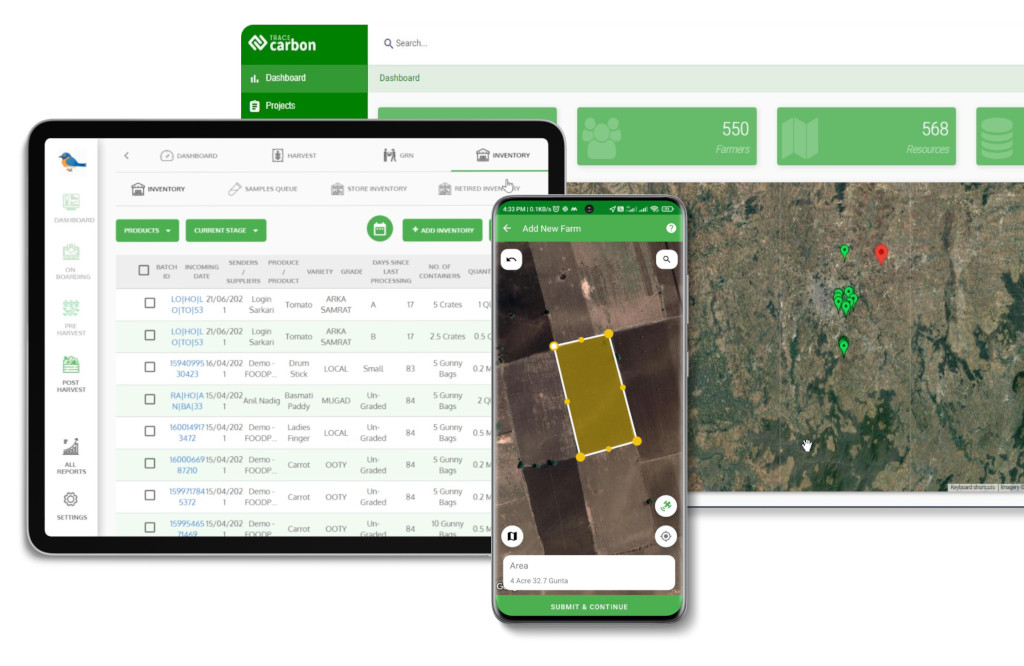Contact: +91 99725 24322 |
Menu
Menu
Quick summary: Avoid costly EUDR mistakes Dutch traders often make. Discover the top 5 compliance pitfalls—and how to fix them fast with smarter tools and traceability. Read now.

As the EU Deforestation Regulation (EUDR) takes effect, Dutch traders across agri-commodities, timber, and cocoa are under increasing pressure to prove that their products are not just sustainable—but also legally sourced and traceable to the plot of land.
Many Dutch exporters are discovering that what worked for previous compliance standards—like relying on batch-level data or third-party certifications—falls short under the EUDR’s strict due diligence rules. For companies importing from high-risk regions or dealing with complex supply chains, the lack of clear geolocation, legality documentation, or risk assessments could mean blocked shipments, lost contracts, and reputational damage.
This guide is designed specifically for Dutch traders, compliance heads, sustainability officers, and procurement leads looking to stay ahead of the curve, avoid costly mistakes, and maintain uninterrupted access to EU markets.
Key Takeaways
Navigating EU regulations is nothing new for Dutch traders. From phytosanitary requirements to sustainability claims, you’ve always been expected to know your stuff. But the EU Deforestation Regulation (EUDR)? That’s different
Unlike past compliance checklists where a certificate and a clean bill from your supplier might have been enough, EUDR shifts the burden of proof squarely onto your shoulders. It’s not just about saying your supply chain is clean—it’s about proving it, plot by plot.
1. Plot-Level Traceability
You must know exactly where your raw materials—cocoa, coffee, soy, wood, palm, etc.—came from.
No, “West Africa” or “Brazilian origin” isn’t enough. You need geolocation data in GeoJSON format tied to each farm or forest plot. Yes—even for smallholders.
Was the land legally used for farming or forestry? Were indigenous land rights respected? You’ll need permits, land use documents, FPIC agreements, and more depending on your source country.
3. Due Diligence Statement (DDS)
This is your official EU submission, confirming your product is:
4. Risk Assessment
Even with all the paperwork in place, the EU still expects you to assess the risk of non-compliance—based on the region, supplier track record, and corruption indicators. This isn’t a checkbox. It’s a serious review.
Our take? EUDR compliance is less about complexity—and more about mindset.
It’s no longer enough to “trust” your supplier or “assume” a certificate covers it. EUDR compliance is about taking ownership of your supply chain—right down to the coordinates.
If you’re a Dutch trader, you’re already known for your logistical efficiency and quality standards. Now’s the time to apply that same discipline to your data, your documentation, and your due diligence.

If you’re a Dutch trader, chances are you’re already focused on staying compliant, especially now that the EU Deforestation Regulation (EUDR) is no longer a future concern—it’s a live requirement. But here’s a critical piece many overlook: compliance isn’t just about where your products come from—it’s about how they were legally produced.
And no, legality doesn’t stop at a land title.
Upstream compliance isn’t your compliance.
Even if your supplier is “trusted” or has third-party certifications, the EUDR expects YOU to verify that:
This matters even more if you’re sourcing from multiple origins—say, cocoa from Ghana and Brazil, or timber from Cameroon and Eastern Europe. Each plot of land has its own legal DNA, and your DDS (Due Diligence Statement) needs to reflect that.
So, what should Dutch traders be doing right now?
If you’re a Dutch trader or agri-exporter, chances are you’ve got systems in place for batch tracking, and maybe even supplier declarations. But under the EUDR, that’s simply not enough anymore.
Here’s the thing: the EU doesn’t want to know what warehouse your cocoa passed through—they want to know exactly which farm plot it came from.
The Problem
Many Dutch traders still rely on:
And that’s a dangerous assumption under EUDR.
Because Article 9 doesn’t ask who has the data—it asks if you can submit it.
EUDR Requires Plot-Level Geolocation—No Exceptions
For every relevant product you place on the EU market, you must prove:
This means capturing coordinates in polygon format for larger farms, or a single point for plots under 4 hectares.
The Fix: Digital Traceability Tools
Instead of chasing WhatsApp messages, PDFs, or Excel sheets from field agents, top Dutch exporters are now using:
These tools don’t just save time—they save you from non-compliance risk and product rejections at the port.
If you’re a Dutch agri or timber trader, you’ve likely spent years building a sourcing strategy around well-known certifications—FSC, RSPO, Rainforest Alliance, and others. They’ve helped open doors, reduce buyer concerns, and signal your commitment to sustainability.
But here’s the uncomfortable truth under the EU Deforestation Regulation (EUDR):
Certifications alone won’t keep you compliant.
What’s the common misconception?
“We’re certified—so we’re already compliant, right?”
It’s an easy assumption to make. But under EUDR, third-party certifications are helpful, not sufficient.
That’s because EUDR doesn’t just ask “Did someone certify this?”
It asks:
Where certifications fall short
So while having certification may reduce your risk classification, it won’t exempt you from your due diligence responsibilities.
What’s the fix?
You don’t need to abandon certifications.
But you do need to layer them with traceable evidence, such as:
Think of it like this:
Certification is a handshake. Documentation is the signature.
You need both to make the deal valid.
As a Dutch importer, you’ve likely built strong relationships with sourcing partners in countries like Brazil, Ghana, or Indonesia. You may trust the paperwork. You may have worked together for years. But under the EU Deforestation Regulation (EUDR), trust isn’t enough proof is everything.
And here’s where many Dutch traders unintentionally slip up:
They don’t dig deep enough into the risk level of the origin itself.
The hidden risks Dutch traders often miss
How do you spot this before it becomes your liability?
The EUDR puts the responsibility on you to identify and mitigate these risks—before you submit your Due Diligence Statement (DDS).
That means going beyond supplier promises and:
You don’t need to become a geopolitical analyst—but you do need smarter tools.
The Fix: Enhanced Risk Assessment
Instead of guessing which suppliers are “clean,” successful Dutch importers are now using:
Even if your supplier looks compliant on paper, the origin might elevate your risk score—which puts your entire DDS under a microscope.
You’ve done the work. You’ve mapped your supply chain, collected certificates, and even spoken to your suppliers about geolocation. You’re ready to submit your Due Diligence Statement (DDS) and check the EUDR compliance box.
But then… the system flags your submission.
GeoJSON too large. FPIC document missing. Incomplete legality trail.
And suddenly, that “done deal” is a delayed shipment—or worse, a regulatory red flag.
Top EUDR DDS Errors Dutch Traders Are Making
The Fix: Guided DDS Workflows Built for Compliance Teams
Leading exporters are now using EUDR-specific digital platforms that:
See how a global tire company turned EUDR compliance into a competitive edge.
From plantation to port, discover how they mapped their rubber supply chain, ensured legality, and avoided costly delays—with full traceability.
EUDR compliance doesn’t have to be overwhelming. For Dutch traders navigating complex global supply chains, the difference between disruption and seamless trade lies in understanding the rules—and having the right tools to act on them. Whether it’s verifying legality, collecting geolocation data, or avoiding DDS pitfalls, the key is proactive, traceable action. With platforms like TraceX, you can move from compliance anxiety to audit-ready confidence—without slowing down your operations.
The EUDR applies to seven key commodities and their derived products: cattle, cocoa, coffee, oil palm, soy, wood, and rubber. This includes raw materials and processed goods like chocolate, leather, plywood, palm oil derivatives, and coffee-based drinks. If you’re importing, exporting, or placing these on the EU market, you’re responsible for ensuring they are deforestation-free, legally produced, and traceable to the plot of origin.
No. While certifications like FSC, RSPO, or Rainforest Alliance can support your risk assessment, they do not replace your legal obligation under EUDR. You still need to submit a Due Diligence Statement (DDS) and provide geolocation data, legality documents, and a risk assessment for each batch. Certification is supportive—but not standalone proof of compliance.
If you cannot obtain accurate plot-level geolocation data from your supplier, you are not permitted to place that product on the EU market. According to EUDR, incomplete due diligence equals non-compliance. Your options are to:
